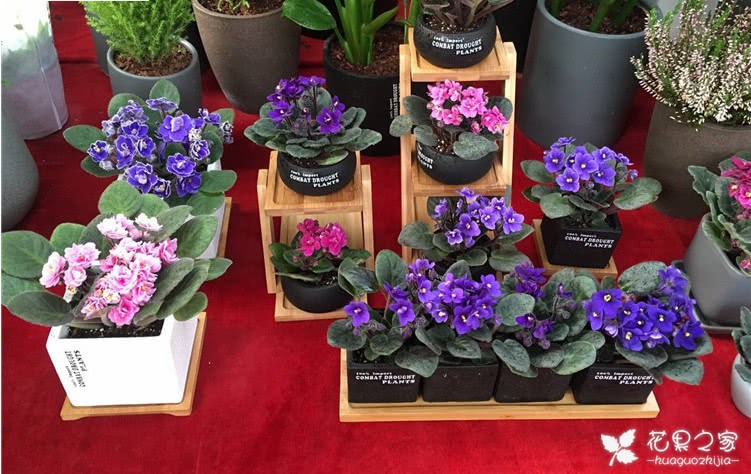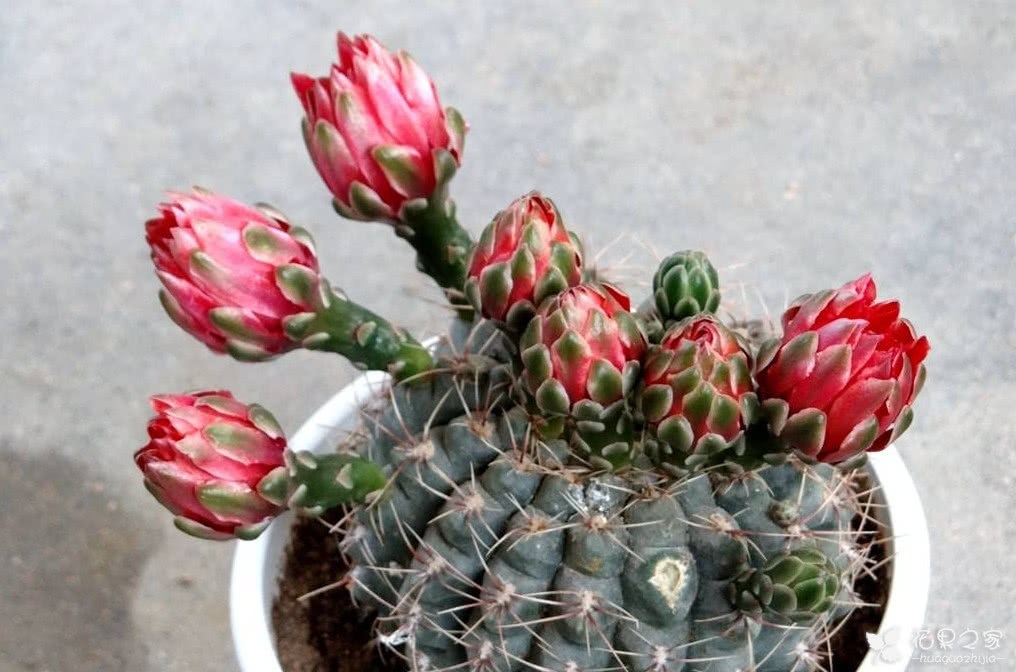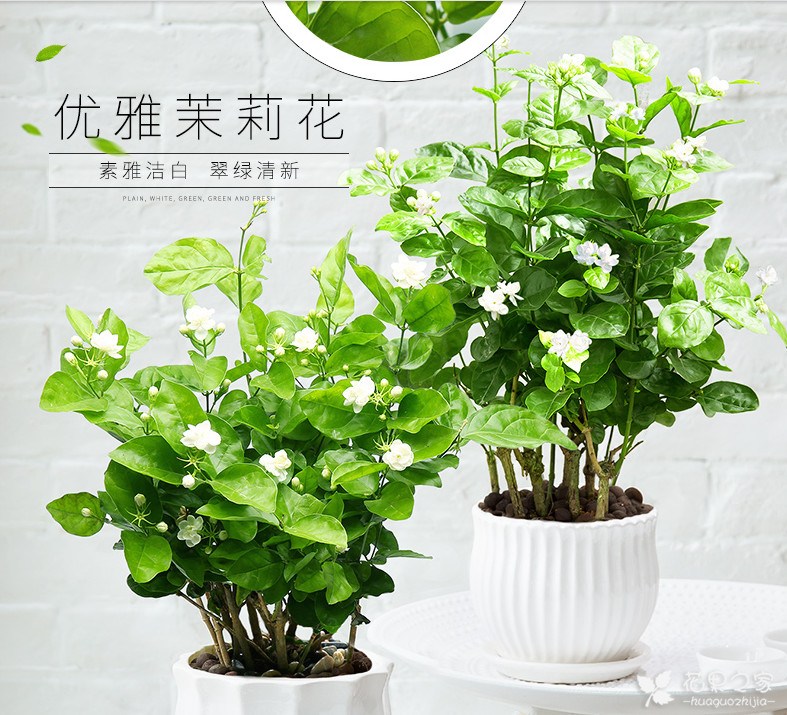How do you raise violets? Three minutes to teach you how to raise violets more easily than green pineapple.

Violet is a biennial or perennial herb of Cruciferae and Violet. Violet has luxuriant flowers, bright color, rich aroma, long flowering period and long inflorescence, so it is loved by many flower lovers and is suitable for potted plants. Today, the editor of Flower and Fruit House will learn with you the methods of cultivating violets, as well as the matters that need to be paid attention to.
Violet growth habit
To maintain violets, the first thing you need to know is the growth habits of violets, if you do not understand the growth habits of violets, it is difficult to raise violets, violets growth habits: like cold and cool climate, avoid dry and hot, like well-ventilated environment, cold-resistant and shady, afraid of waterlogging, mild climate in winter, but can also withstand a short-5 ℃ of low temperature. The suitable temperature for growth is 15-18 ℃ during the day and 10 ℃ at night. Violet is not strict with the soil, but it grows better in the soil with good drainage and neutral alkali, and avoids acidic soil.
Violet florescence: April-May.
Violet flower words: eternal beauty and love, simplicity, virtue, the coolness of summer.
The Culture method of Violet
Method 1. Soil
Violets are not very strict about the soil, but it is best for us to grow them in a fertile, loose, well-drained neutral alkaline soil. Violet nutrient soil formula: garden soil 5, perlite 2, vermiculite 1, peat soil 2. Of course, none of these proportions must be done, and the proportion should be adjusted according to the planting environment.
Method 2. Watering
Violet pot soil moisture can not be too wet, when watering violets, we should follow the "dry see wet" watering principle, that is, the soil surface whitening should be watered, watering until moist, keep the soil "moist". Violets are usually watered every 3 to 4 days. The lower the temperature, the less water. When the ambient temperature rises, the amount of water should be increased. In general, violets should fully water the basin soil when sowing, and should not be watered directly after sowing. If the soil becomes dry and white, spray can be used or "soaking pot method" can be used to keep the soil moist. Water thoroughly after planting. The water should be controlled to squat seedlings in the early stage of growth to keep the soil dry.
Method 3. Fertilization
Sufficient base fertilizer should be applied when planting violets, and proper fertilization should be applied in the early stage according to the growth of the plant. Do not fertilize too much at once, and apply thin fertilizer frequently, otherwise it is easy to cause overgrowth of plants. When violets conceive buds, apply 0.1% potassium dihydrogen phosphate solution once a week.
Method 4. Illumination
Violets like light and need all-day sunshine.
Method 5. Reproduction
Violet propagates mainly by sowing seeds. The sowing time is generally from mid-August to early October, and can also be adjusted according to the time spent. If sowing in February in the greenhouse, it will blossom in May, sowing in March, flowering in June, and so on.
Method 6. Diseases and insect pests
Violet is generally prone to diseases and insect pests are root rot, crown rot, powdery mildew, aphids, mites, thrips, nematodes and so on. In order to avoid the damage of these diseases and insect pests, we need to disinfect the substrate before planting and put the planted violets in a ventilated place. If diseases and insect pests have occurred, then it is necessary to timely spray the relevant chemicals for prevention and control.
Matters needing attention in Violet Culture
1. The temperature of violets should be controlled between 10 ℃ and 30 ℃, and the temperature should not be lower than 5 ℃ during overwintering.
2. Violets are prone to diseases and insect pests if they are not adequately illuminated and ventilated.
3. The moisture of Violet basin soil should not be too wet, let alone produce stagnant water.
Conclusion: after reading the contents of "Violet Culture methods and matters needing attention" above, I believe you should have a general understanding of the conservation of violets. Thank you for your support and pay attention to us to get more violets maintenance methods and skills.
- Prev

How to make the cactus blossom? Four key points to promote flowering, flowering, small case
Cactus can beautify the environment, absorb the polluted dust in the air and purify the air, so it is favored by many people. The cactus we see in the flower market often bloom, but our own cactus hasn't blossomed for years.
- Next

How to raise jasmine? Culture methods and matters needing attention of Jasmine Flower
I believe that we are no stranger to jasmine. "the flowers bloom all over the garden, but the fragrance can not be perfumed." it is the jasmine that "one flower can smoke a room of incense". Evergreen small shrub jasmine has green leaves, white flowers and strong fragrance, which is a common garden.
Related
- Wuhan Hospital Iron Tree Blooming Result Was Instantly Frightened by the Gardener Master
- Which variety of camellia is the most fragrant and best? Which one do you like best?
- What is the small blue coat, the breeding methods and matters needing attention of the succulent plant
- Dormancy time and maintenance management of succulent plants during dormancy
- Minas succulent how to raise, Minas succulent plant pictures
- What are the varieties of winter succulent plants
- How to raise succulent plants in twelve rolls? let's take a look at some experience of breeding twelve rolls.
- Attention should be paid to water control for succulent plants during dormant period (winter and summer)
- Watering experience of twelve rolls of succulent plants
- Techniques for fertilizing succulent plants. An article will let you know how to fertilize succulent plants.

